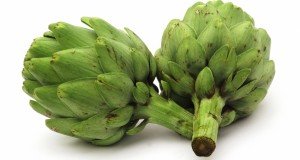Gene editing will put experimental Franken-foods on store shelves SOONER than expected
(NaturalHealth365) The biotech industry wants us to believe that gene editing technology will help to create fruits and vegetables with a longer shelf life; raspberries in luscious shades of violet and even peach-flavored strawberries.
But, will all these ‘Franken-food’ creations really be healthy for us?
Many experts warn that not enough is known about the long-term effects on health of these so-called ‘improvements’ in food production. The mere fact that the gene editing tool is licensed by Monsanto (known as the “most hated corporation in the world”) is enough to give pause for many food safety advocates.
Today, we’ll take a closer look at this relatively new technology – and a disturbing new study that highlights potential risks.
Gene editing company gets a financial boost from Monsanto
The gene editing tool, known as CRISPR-Cas9 (an acronym for Clustered Regularly Interspaced Short Palindromic Repeats) is the product of Pairwise Plants – a California-based startup company helmed by two Harvard scientists.
In March of 2018, Monsanto invested $125 million in Pairwise, and entered into an exclusive collaboration with the company. Unlike normal GMO technology – which inserts foreign genes within a plant’s genome – CRISPR involves deleting or changing existing genes.
The CRISPR technology revolves around a family of genes known as MYBs, which can control whether other genes are switched on or off. Gene-editing the MYBs allows scientists to manipulate the flavors and textures of fruits, while enhancing their nutritional profile and heightening levels of beneficial phytochemicals.
For example, gene editing can result in higher amounts of antioxidant carotenoids, or of the cancer-fighting substance sulforaphane. And, by affecting the content of anthocyanins (natural antioxidant plant pigments that give fruits and vegetables their intense hues) CRISPR can help scientists manipulate color at will.
In addition to improving aesthetic appearance and flavor, CRISPR is being touted as a way to help crops resist disease, drought and spoilage – and even prolong shelf life and season of availability.
While standard genetic modification can take years to change the genetic traits of crops, CRISPR can do it within a generation of one or two crops – causing enhanced produce to come to market much more quickly.
It all sounds pretty good so far, right?
Not so fast: Bombshell study demonstrates that Crispr-Cas9 can cause mutations
An explosive study published last May in Nature Methods reveals that CRISPR caused literally hundreds of unintended mutations in mice.
The problem came to light when researchers sequenced the animals’ genomes (their entire collection of genes), and found that two of the mice had sustained more than 1500 mutations involving the nucleotide – a small packet of DNA.
The mutations were “off-target” – meaning they occurred in unedited genes (not the genes that were edited in the first place).
Molecular geneticist and GMO expert Dr. Michael Antoniou points out even tiny changes could cause unintended effects. For example, a disruption in the function of an enzyme could lead to unpredictable biochemical reactions.
Alarmingly, computer algorithms used to screen for possible mutations failed to predict them.
And, here’s the kicker.
Three days after the announcement of the partnership between Monsanto and Pairwise, the study was officially retracted.
The editors of Nature Methods said that “multiple groups” had questioned the study’s findings – and whether they were, in fact, caused by CRISPR. (Be that as it may, the timing appears highly suspicious – to say the least!)
You can view the retracted study here.
Monsanto barrels through a gaping loophole in regulations
The USDA has ruled against enacting serious restrictions on CRISPR-modified fruits and vegetables – as long as the changes theoretically “could” have been produced through traditional plant-breeding methods.
And, obtaining the licensing for CRISPR allows Monsanto to avoid regulations associated with GMO foods. Because gene-editing doesn’t add genes – it only changes or deletes existing ones – crops edited with CRISPR aren’t considered to be technically GMOs.
Although it’s small comfort, the gene-editing technology is subject to some restrictions. Monsanto can’t use CRISPR to “gene drive” (spread genetic traits within a whole population).
In addition, the company isn’t permitted to produce any sterile “terminator” seeds – a technique Monsanto used in the past – disgracefully – to compel farmers to purchase new seeds every year.
And, they can’t use CRISPR to modify tobacco used in smoking. But natural health experts say these regulations are too few and far between, and that much more oversight is needed.
Experts warn: Gene editing must be regulated
GM watch, a non-profit organization that provides the public with the latest news and comments on GMOs, maintains that new genome editing should be at least as strictly regulated as any conventional genetic modification technique.
Dr. Antoniou maintains that the entire genome sequences of gene-edited organisms should be submitted to biosafety authorities – and that long-term toxicity studies should also be performed.
He also offers a chilling prediction, warning that it isn’t a question of “whether” CRISPR will cause unintended mutations to appear – but a question of “how many.”
Although Monsanto had originally predicted that gene edited produce could appear in stores within five to ten years, the technology appears on track to appear even sooner, with corn and mushrooms as the likely first versions.
Of course, the concern over gene editing represents yet another reason to stick with organic food – and bypass Franken-food completely!
Sources for this article include:











